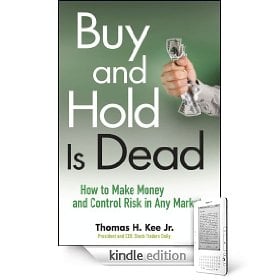How To Buy Shares – Par Value – Cum Dividend – and Ex Dividend Explained

Why Do People Buy Shares Of A Company?
1. Historically, people have bought stocks to guard against inflation. They believe that in old age the stocks will be worthy several times what they paid for them having factored in the loss in money value from inflation. This may not always be true but it has worked to many people.
2. The other reason people buy shares of a company is to earn dividends every time the company makes a profit and pay dividends.
3. Another reason people buys stocks is to speculate that sooner the price of the stocks will go up and be able to sell the shares at high prices for a profit.
4. Pride – some people just want to associates themselves with companies they believe are great regardless of whether their stocks are making them money or not.
Buy Books Online Here on Stocks, Shares, De minimis, Accountancy, Par Value, Ownership, Stock Certificates, and Shareholders
Buy and Hold
In the olden days, stock pickers believed that if one bought a stock for $10, he or she would hold it for as long as it takes and only sell that stock only if its price is higher than the price of $10. That way, the business of making a loss trading stocks was not in their vocabulary. There is nothing wrong in holding a stock for several decades because it’s not a time wearing or a decaying asset like stock options. If time to die was to come before your stock is trading above $10, then you just had to pass the stock to your children who will continue to hold it until when it will be trading above $10. One had to comfort him/herself that the profit was the dividends earned, and that your dear children have inherited something from you.
Today’s Stock Traders
Many of today’s stock traders may not agree with buying and holding stocks. And they have very good reasons why ‘buy and hold’ of stocks is not the right way to invest one’s money. But the truth is that more than 50% of these today’s traders can not beat the ‘buy and hold’ method of trading in the stock market.
Financial Jargons
If one would want to do buy shares and hold, then there are at least three financial jargons that you will need to understand and of which you will come across frequently. These are: par value, cum dividend, and ex dividend.
Par Value
Par value is also known as par. Par value is the nominal value. Par value is the face value of a security. Ideally, if you have a business and you quantify it to be worthy say $100,000, you can divide it into 1000 equal shares so that one share is worth $100. If you sell one share to me at $100 and I go to the streets and people there tells me they want to buy that share for $150, then I can sell it to them at $150 and I will make a profit of $50. If the people on the streets were to tell me that they will buy my share for $40, I can not sell my share to them but instead I will keep it or I can as well return it to you and redeem my $100 dollars that I paid to you. This is how bonds work. Bonds have a face value that is redeemable. Stocks used to be so, but not anymore. Why is it that the par value in stocks is not equal to the amount invested? This is because companies realized that this is appropriate for them to avoid a liability to stockholders when the stock price is trading far below the par value.
IPO – Initial Public Offering
Then, when a company issued an IPO – initial public offering, the share price at initial offering was the par value. Today, due to the need to avoid liability to stockholders, a company will issue an IPO at say $5 per share with a par value of $0.005. Its just a polite way of telling you buy that stock at you own risk because the company may only buy it back at $0.005 which is just next to nothing. Today, the par value has no meaning in common stocks and in fact shares of some companies do not have par value. Those that do, the par value is just there to satisfy the law in some jurisdictions. The law does not allow the issuing company to issue additional shares below par value. This way, investors are assured that no one will ever receive a more favorable price than they did. It is however important to note that in US, it is completely legal for a company to issue shares below par value.
Dividends
Dividends, and especially on preferred stocks, are calculated based on par value. For example: You buy a stock at $50 in the stock market. The par value of that stock is say $1. After one year, that company makes a profit of $0.5 per share and plan on paying the $0.5 profit as dividend. The percentage of dividend to the par value is 50% and this is what you will see in the media. But the truth is that you invested $50 of which you are making $0.5 which equates to 1%. These are just peanuts to such a risky investment but the public who goes by the media may be thinking that is the best company in the world. What investors need realize is that when they invest in companies, the people who seem to benefit most from their investments are the employees of those companies. Yes, the employees will make sure they make the most out of the company because without them there would be no profit.
What Does Cum Dividend Mean?
Cum dividend means the stock’s dividend has been declared but not paid. It’s the buyer of cum dividend stock who receives the dividend. Ideally, the price of the stock is bloated by an amount almost equal to the dividend amount.
Declaration Date
On declaration date, a company’s board of directors will announce their intention to pay dividend. By announcing their intention to pay dividends, the directors create a liability to shareholders and of which that liability is recorded by the accountant on the company’s books. Depending on the interpretation of the stock market, this may results in the company’s stock price going up by an amount almost equal to the dividend amount. But whatever the trading price, the dividend price is factored in. The directors will also on declaration date give a date when dividends’ payment will be made. The directors will also announce record date. The stock will remain cum dividend until the in-dividend date which is one trading day before ex-dividend date.
What Does Ex-Dividend Shares Mean?
These are shares that no longer carry the rights to pay dividends to the most recently declared dividend. Anyone buying the shares after the ex-dividend day is not entitled to receive the dividend.
Examples on Par Value, Cum Dividend, and Ex Dividend Explained
1. Today, Stocks OWNERSHIP date and Stocks BUYING date are two different things – there is a difference of 3 trading days for the security to settle. This means that if you BUY stocks on Monday, these stocks are in essence OWNED by you on Thursday.
2. If the Directors give a record date of say Wednesday 14th, the ex dividend date is two trading days earlier which is Monday 12th, if you OWN the shares on Friday 9th, you get paid the dividend. If you OWN the shares on Monday 12th, do not expect to be paid dividends.
Get Yourself a Book
That’s it. If you want to learn more about trading in stocks, then get yourself a book. You can buy books online from the trusted Amazon stores who have a wide selection of books on how to successfully trade in stocks, and Amazon’s prices are competitive enough. Below is a listing of a few of such books.

Buy Books Online Here on How to Make Money and Control Risk in Any Market
If you have liked this article, and you would want this page to keep up and improved, you can help by purchasing some great items from Amazon by following Amazon links and widgets on this page. A free way to help would be to link back to this webpage from your web page, blog, or discussion forums.
The Author’s page is designed to help beginners and average readers make some money as an extra income to supplement what they may be earning elsewhere - details of which you can find in My Page, if you will.










